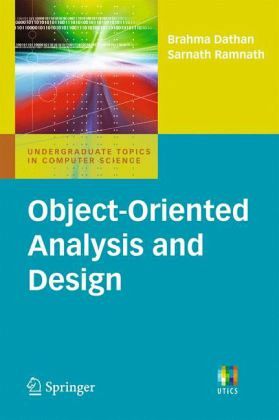Nicht lieferbar

Object-Oriented Analysis and Design
Versandkostenfrei!
Nicht lieferbar
Object-oriented analysis and design (OOAD) has over the years, become a vast field, encompassing such diverse topics as design process and principles, documentation tools, refactoring, and design and architectural patterns. For most students the learning experience is incomplete without implementation. This new textbook provides a comprehensive introduction to OOAD. The salient points of its coverage are:- A sound footing on object-oriented concepts such as classes, objects, interfaces, inheritance, polymorphism, dynamic linking, etc.- A good introduction to the stage of requirements analysis....
Object-oriented analysis and design (OOAD) has over the years, become a vast field, encompassing such diverse topics as design process and principles, documentation tools, refactoring, and design and architectural patterns. For most students the learning experience is incomplete without implementation. This new textbook provides a comprehensive introduction to OOAD. The salient points of its coverage are:
- A sound footing on object-oriented concepts such as classes, objects, interfaces, inheritance, polymorphism, dynamic linking, etc.
- A good introduction to the stage of requirements analysis.
- Use of UML to document user requirements and design.
- An extensive treatment of the design process.
- Coverage of implementation issues.
- Appropriate use of design and architectural patterns.
- Introduction to the art and craft of refactoring.
- Pointers to resources that further the reader's knowledge.
All the main case-studies used for this book have been implemented by the authors using Java. The text is liberally peppered with snippets of code, which are short and fairly self-explanatory and easy to read. Familiarity with a Java-like syntax and a broad understanding of the structure of Java would be helpful in using the book to its full potential.
- A sound footing on object-oriented concepts such as classes, objects, interfaces, inheritance, polymorphism, dynamic linking, etc.
- A good introduction to the stage of requirements analysis.
- Use of UML to document user requirements and design.
- An extensive treatment of the design process.
- Coverage of implementation issues.
- Appropriate use of design and architectural patterns.
- Introduction to the art and craft of refactoring.
- Pointers to resources that further the reader's knowledge.
All the main case-studies used for this book have been implemented by the authors using Java. The text is liberally peppered with snippets of code, which are short and fairly self-explanatory and easy to read. Familiarity with a Java-like syntax and a broad understanding of the structure of Java would be helpful in using the book to its full potential.



